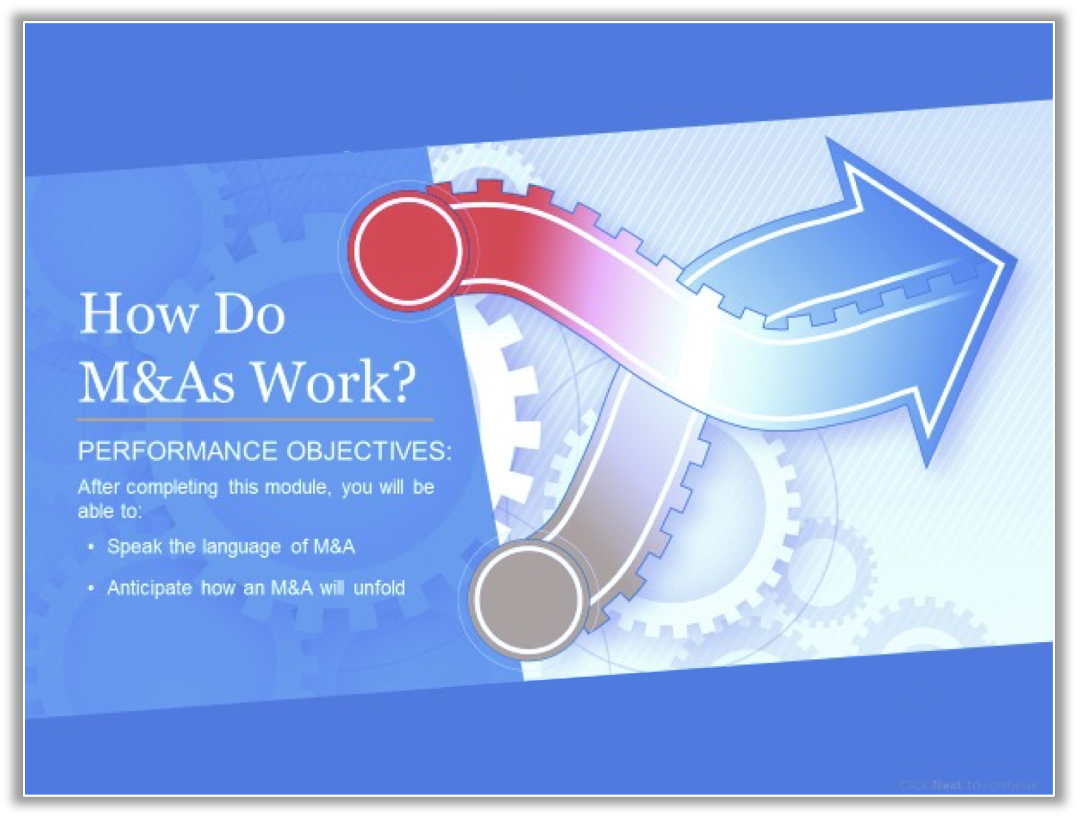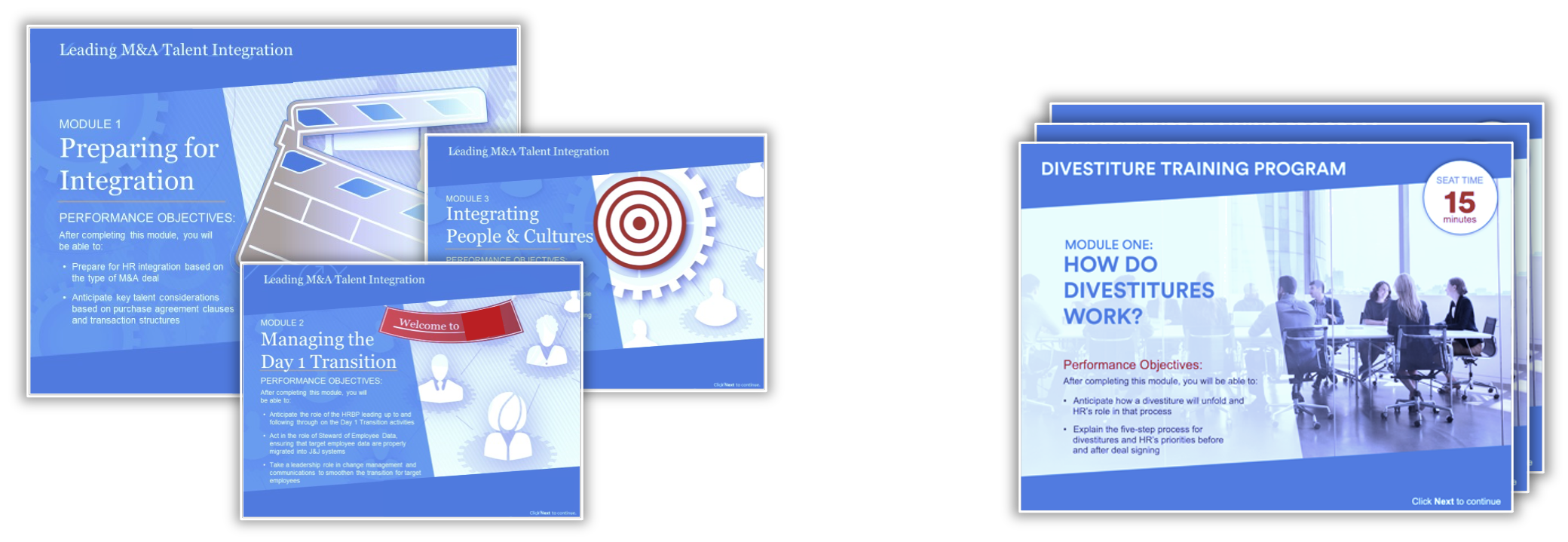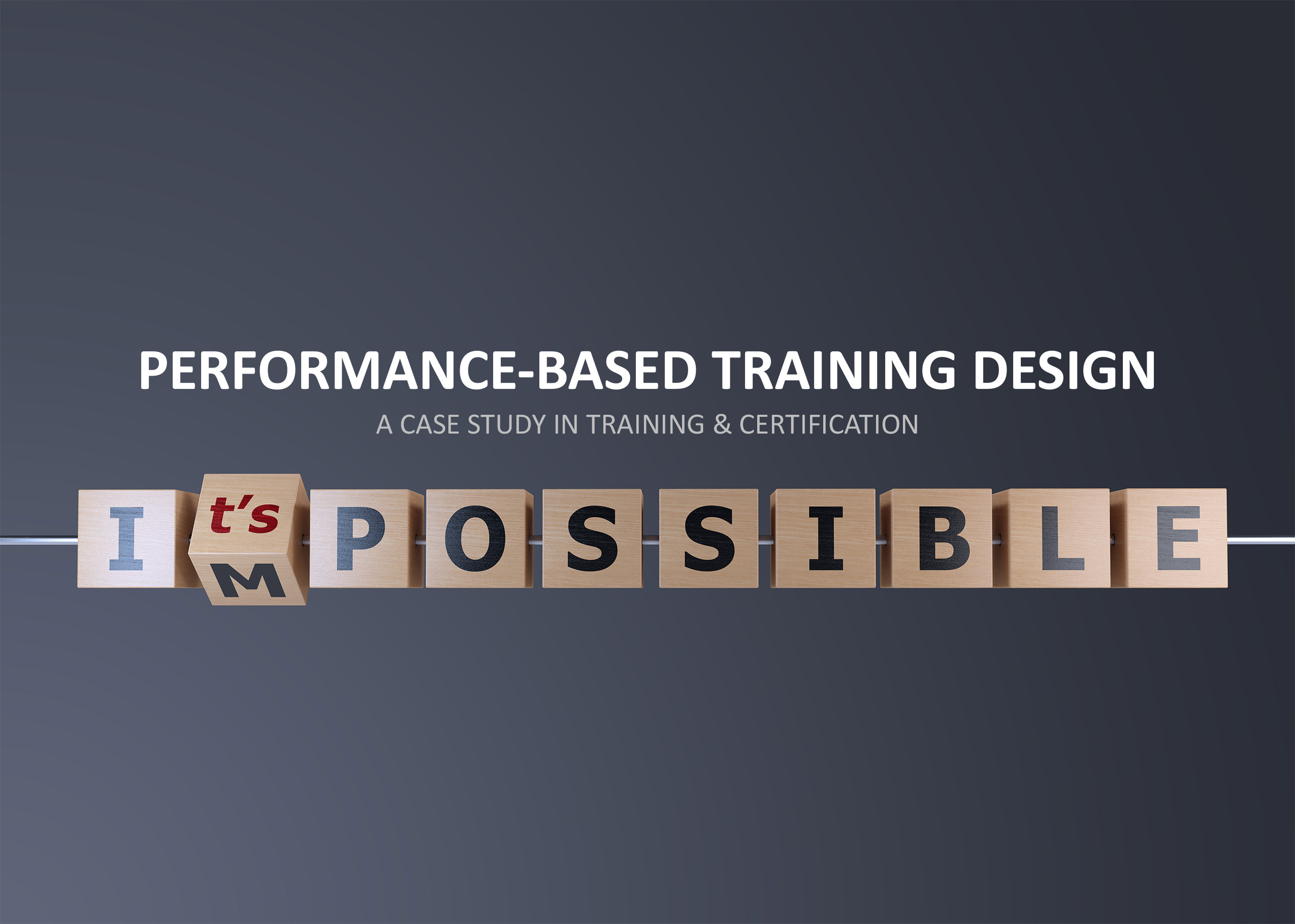Instructional designers who develop workplace training programs tend to face similar challenges and constraints, so I thought it would be helpful to share how the Prestera FX team overcame these on a high-stakes project for one of our life sciences clients.
This case study illustrates several performance-based instructional design principles and how they can be applied under real-world conditions. You will see how we developed a scalable program that flexed to the needs of a diverse target audience.
The Challenges
This case involves a global life sciences manufacturer that produces a wide variety of pharmaceuticals, medical devices, and consumer products.
#1: Broad Audience
Corporate training programs often need to suit the needs of a wide variety of business units, functional areas, and geographical regions, making it a challenge to develop a scalable approach that suits everyone.
In this case, our task was to design a training program to help Human Resources professionals effectively participate in the company’s mergers, acquisitions, and divestitures. Arbitrage was—and continues to be—an important aspect of the parent company’s business strategy. As is often the case, the target audience was large with over 5,000 HR professionals and diverse, including HR Business Partners from different business units around the globe as well as HR Specialists from Talent Acquisition, Learning & Development, Leadership Development, Organization Development, HR Information Systems, Compensation, and Benefits.
How do you develop a single program that addresses the needs of such a varied audience?
#2: Relevance
Another complicating factor was relevance.
For HR professionals already notified that their business unit was being merged or sold, this training would be immediately relevant to the work they would do over the next few months, so their engagement with the content was likely to be very high.
For those unaware that their business units would undergo a merger or divestiture, this training would seem irrelevant, and their engagement with the content likely to be very low.
#3: Agility
When a business unit was purchased or sold, HR professionals were in the vanguard of the due diligence, planning, and change management efforts, so this company wanted HR people to be able to ramp up quickly and take a leadership role within acquisition or divestiture project teams.
The Solution Architecture

Primer
All HR professionals globally were asked to complete a 30-minute primer elearning module to build foundational knowledge of acquisitions and divestitures, HR’s role within those processes, and the resources available to help them if/when the time came to participate.
This elearning module was the only mandatory component that all HR professionals were required to complete. It was used to level-set the whole HR organization and was added to the HR onboarding curriculum to ensure that new HR professionals were aware of this aspect of their jobs.

Primer Module
Survival Kit
When an HR leader was first notified that their business unit would be going through an acquisition or divestiture, they were immediately directed to a survival kit containing all the basics these first responders would need to ramp up quickly.
- Study Guide iPDF: Depending on what project type the HR professional would be supporting, an interactive PDF study guide for acquisitions or divestitures was provided. These study guides provided a concise overview of what the project would involve, key deliverables, swim-lane workflow diagrams, roles & responsibilities, best practices, and tips from other HR professionals who had been through the process. For more detail, the study guide contained links to videos that described how a particular task or procedure worked.
- How-To Video Clips: These short clips involved a blend of subject matter expert “talking head” videos and simple 2D animations with voice-over narration. The videos were hosted on the company’s streaming server and also made available to be accessed through intranet searches. Between the videos and study guide iPDF, HR first responders would have much of what they needed to ramp themselves up quickly and start participating in the process.

Study Guide iPDFs (left) and How-To Videos (right)
Process Training
Not all HR professionals would be expected to ramp up quickly and start contributing to an acquisition or divestiture project team. First responders were typically the most senior HR leaders within their business units. Each of those leaders, however, would need to train up their business unit’s HR team and marshal their efforts to support the process. To help those HR leaders get their people ready, we produced a series of elearning modules and a live workshop.
Elearning Prework: There were two series of elearning modules, one for HR professionals going through an acquisition and one for HR professionals going through a divestiture. The modules were developed in Storyline and incorporated voice-over narration, animations, and videos.

Elearning PreWork Modules
- Modular Design: Each elearning module was 10-20 minutes in length and focused on a different aspect of the workflow. This enabled the HR leader to assign and/or prioritize different modules for different HR team members, depending on how they would support the process.
- Interactivity: Each module contained a 2:1 content to knowledge check exercise ratio with many of the content elements involving either a workflow animation or a clickable sequence of steps. Real-world examples and scenarios made the content more relevant and immersive. The videos were sprinkled throughout, where they were relevant.
- Post-Test: Each module concluded with a graded quiz, designed to ensure that the learners acquired the necessary knowledge to advance to the workshop. They would not be invited to the workshop unless they completed and passed all the assigned modules.
Flipped Classroom: By delivering process knowledge training through the elearning modules, we freed up the live workshop to focus on application and transfer. The Prestera FX team developed the slides, facilitator guide, and participant materials for two variations of the workshop: one for acquisitions and one for divestitures. We also conducted train-the-trainer sessions with the in-house facilitators who would deliver the workshops.

Review Game (left) and Case-Based Learning (right)
- Review Game: The class started with a review activity—a web-enabled game show involving buzzers and an animated on-screen character, Beegis Buzzbin. The game served as an ice breaker while helping to level-set the audience on the key concepts that they should have retained from the elearning prework.
- Case-Based Learning: After the game, the rest of the half-day workshop immersed learners in one of several case studies. For each case, we provided a set of briefing documents similar to those that the HR professionals would receive on their real acquisition or divestiture projects. Working in small teams, the participants reviewed the case materials, analyzed them as part of their due diligence work, and developed plans for mitigating risks and issues. This was, in effect, a realistic simulation of the kind of work they would later be doing on their project teams.
- Cohort-Based Learning: Though initially designed to be attended by a mix of HR professionals from different business units, we also assumed that some HR leaders would want to have their entire HR team go through the workshop at the same time, as a homogeneous cohort. The class was capped at 20, but we sometimes had three or four classes coming through a few days apart, sometimes with their HR leader co-facilitating each session. This created opportunities for the facilitators and HR leader to speak to the cohort about the particulars of their acquisition or divestiture project, which made the experience even more immersive for them.
Design Principles at Work
This case study illustrates the real-world application of several performance-based instructional design principles:
- Performance Support Focus: Throughout the design process, we focused on providing the right support at the right time to help the target audience perform the expected work of an acquisition or divestiture project team. We avoided the all-too-common “spray & pray” approach of trying to teach everyone the same thing at the same time for efficiency’s sake. All HR professionals were required to go through the primer to be ready to spring into action if and when the time came for them to participate in an acquisition or divestiture project. After that, everything else was customized for those responsible taking action.
- Adaptive Design: Rather than one monolithic program, we created a collection of small building blocks that could be stacked in different configurations and adapted to different audiences and situations. The video clips could be made available in four ways: from the study guide iPDF to ramp up quickly, embedded in elearning modules and workshops where appropriate, referenced individually on an as-needed basis, and as responses to intranet queries. The modular, bite-sized elearning series components could be assigned and prioritized differently for different individuals. The workshop was configurable to heterogeneous classes made up of HR professionals from different business units and functions as well as to homogeneous cohorts that could shift the focus to their own shared project.
- Flipped Classroom: By delivering most knowledge content as prework via study guide, video clips, and elearning modules, we de-cluttered the live workshop experience, enabling it to do what it does best: immerse the audience in real-life cases, hands-on problem-solving, and deep collaborative discussions. While the on-demand prework elements incorporated real-world examples and scenarios, flipping the classroom enabled us to maximize the immediacy and richness of the live collaborative learning experience.
- Pull-Through: Learners gained the skills and resources needed to work in real-world acquisition or divestiture project teams through in-the-flow-of-work performance support provided by the Survival Kit and the case-based workshop activities. The goal of any performance-based training is to ensure that the learner can apply acquired knowledge and skills the best practices to their actual, real-world work, to pull it through from the classroom to the work context. This is called skill transfer, far transfer, or just transfer. In order to achieve transfer, we need to get the learner thinking deeply about how they will do their jobs differently as a result of the training, we need to give them opportunities to practice, reflect, and refine, and we need to give them tools that they can use to overcome obstacles while trying to apply their lessons learned on the job. Without these three ingredients, most training programs fail to achieve significant pull-through.
Taken together, these principles help to make performance-based instruction a rich and powerful way to maximize relevance and engagement, deliver the right performance support at the right time to the right people, and achieve skill transfer levels that significantly impact business outcomes.
We’d love to hear your perspective on this and other ways to make workplace training more effective and impactful.

